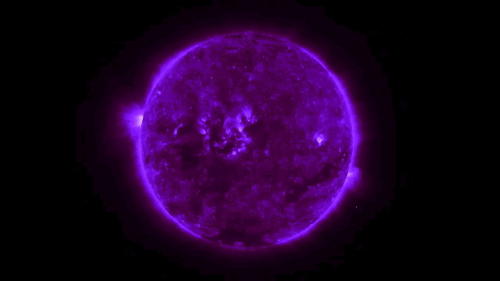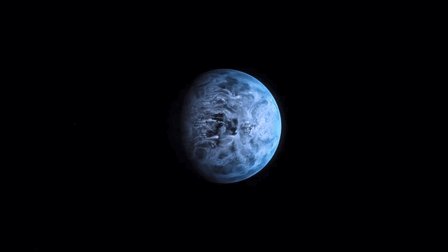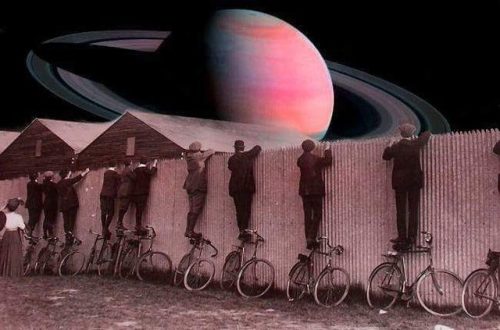I-need-some-space-man-blog - Lexi :)

More Posts from I-need-some-space-man-blog and Others









I love you all so much, happy pride month

Submission
It’s not a compliment when you say a transwoman is “prettier than you omfg 😱” or
You’re saying that you can’t believe that she is beautiful even though she is trans, or that you assume a transwoman should be ugly and that this one individual is an exception
Solar System: Things to Know This Week
Jupiter, we’ve got quite the photoshoot planned for you. Today, our Juno spacecraft is flying directly over the Great Red Spot, kicking off the first-ever close-up study of this iconic storm and passing by at an altitude of only 5,600 miles (9,000 kilometers). In honor of this historic event, below are 10 things to know about the planet’s most famous feature.

1. A Storm That Puts Others to Shame
The Great Red Spot is a gigantic, high-pressure, ancient storm at Jupiter’s southern hemisphere that’s one of the longest lasting in the solar system. It’s so large, about 1.3 Earths could fit inside of it. And you can bet you’ll get swept away—the storm’s tumultuous winds peak at about 400 mph.
2. How Old Is It?
The Great Red Spot has been swirling wildly over Jupiter’s skies for the past 150 years—maybe even much longer. While people saw a big spot on Jupiter when they started stargazing through telescopes in the 1600s, it’s still unclear whether they were looking at a different storm. Today, scientists know the Great Red Spot has been there for a while, but they still struggle to learn what causes its swirl of reddish hues.

3. Time for That Close-Up
Juno will fly over the Great Red Spot about 12 minutes after the spacecraft makes the closest approach to Jupiter of its current orbit at 6:55 p.m. on July 10, PDT (9:55 p.m. on July 10, EDT; 1:55 a.m. on July 11, Universal Time). Juno entered orbit around Jupiter on July 4, 2016.
4. Oh, So Mysterious
Understanding the Great Red Spot is not easy, and it’s mostly Jupiter’s fault. The planet a thousand times as big as Earth and consists mostly of gas. A liquid ocean of hydrogen surrounds its core, and the atmosphere consists mostly of hydrogen and helium. That translates into no solid ground (like we have on Earth) to weaken storms. Also, Jupiter’s clouds make it hard to gather clear observations of its lower atmosphere.

This false-color image of Jupiter was taken on May 18, 2017, with a mid-infrared filter centered at a wavelength of 8.8 microns, at the Subaru Telescope in Hawaii, in collaboration with observations of Jupiter by NASA’s Juno mission. Credit: NAOJ/NASA/JPL-Caltech
5. Help From Hawaii
To assist Juno’s investigation of the giant planet’s atmosphere, Earth-based telescopes lent their helpful eyes. On May 18, 2017, the Gemini North telescope and the Subaru Telescope—both located on Hawaii’s Mauna Kea peak—simultaneously examined Jupiter in very high resolutions at different wavelengths. These latest observations helped provide information about the Great Red Spot’s atmospheric dynamics at different depths and at other regions of Jupiter.
6. Curious Observations
Observations from Subaru showed the Great Red Spot “had a cold and cloudy interior increasing toward its center, with a periphery that was warmer and clearer,” said Juno science team member Glenn Orton of our Jet Propulsion Laboratory, Pasadena, California. “A region to its northwest was unusually turbulent and chaotic, with bands that were cold and cloudy, alternating with bands that were warm and clear.”

This composite, false-color infrared image of Jupiter reveals haze particles over a range of altitudes, as seen in reflected sunlight. It was taken using the Gemini North telescope in Hawaii on May 18, 2017, in collaboration with observations of Jupiter by our Juno mission. Credits: Gemini Observatory/AURA/NSF/NASA/JPL-Caltech
7. Hot in Here
Scientists were stumped by a particular question: Why were the temperatures in Jupiter’s upper atmosphere comparable to those found at Earth, even though Jupiter is more than five times the distance from the sun? If the sun isn’t the heat source, then what is? Turns out, the storm in the Great Red Spot produces two kinds of turbulent energy waves that collide and heat the upper atmosphere. Gravity waves are much like how a guitar string moves when plucked, while acoustic waves are compressions of the air (sound waves). Heating in the upper atmosphere 500 miles (800 kilometers) above the Great Red Spot is thought to be caused by a combination of these two wave types “crashing,” like ocean waves on a beach.

8. Color Theory
Scientists don’t know exactly how the Great Red Spot’s rich colors formed. Studies predict Jupiter’s upper atmosphere has clouds consisting of ammonia, ammonium hydrosulfide, and water, but it’s still unclear how or even whether these chemicals react. “We’re talking about something that only makes up a really tiny portion of the atmosphere,” said Amy Simon, an expert in planetary atmospheres at NASA’s Goddard Space Flight Center in Greenbelt, Maryland. “That’s what makes it so hard to figure out exactly what makes the colors that we see.” Over at NASA’s Jet Propulsion Laboratory in Pasadena, California, researchers concluded that the ruddy color is likely a product of simple chemicals being broken apart by sunlight in the planet’s upper atmosphere. “Our models suggest most of the Great Red Spot is actually pretty bland in color, beneath the upper cloud layer of reddish material,” said Kevin Baines, a Cassini scientist at JPL.
9. Been There, Haven’t Seen That
In January and February 1979, NASA’s Voyager 1 spacecraft zoomed toward Jupiter, capturing images of the Great Red Spot during its approach. Still, we’ve never been as close as we’re about to get during Juno’s flyover on July 10.

10. Simply Beautiful
This image of a crescent Jupiter and the iconic Great Red Spot was created by a citizen scientist, Roman Tkachenko, using data from Juno’s JunoCam instrument. JunoCam’s raw images are available here for the public to peruse and enhance.Want to learn more? Read our full list of the 10 things to know this week about the solar system HERE.
Make sure to follow us on Tumblr for your regular dose of space: http://nasa.tumblr.com
you weren’t right for me but god, you could’ve been.
you were right for me in all the wrong ways. (via uhnsaids)

Not related to the picture, but if you want to write me or if you have a question, I am open for everything.


Blue and bizarre
This illustration shows HD 189733b, a huge gas giant that orbits very close to its host star HD 189733. The planet’s atmosphere is scorching with a temperature of over 1000 degrees Celsius, and it rains glass, sideways, in howling 7000 kilometre-per-hour winds.
Image credit: NASA, ESA, M. Kornmesser | Animation

Dreaming of a Suburban Utopia:
Happy Martian New Year!

For any planet, a year is the time it takes to make one orbit around the sun. Because Mars is farther away from the sun, it has to travel a greater distance than Earth. It takes Mars about twice as long as it does for Earth to make one circle around the sun…therefore, a year on Mars lasts twice as long.

On May 5, Mars passes solar longitude 0 as the sun crosses the equator on Mars. This is the vernal equinox and was chosen by planetary scientists as the start of a new year.

Mars has four seasons, roughly twice as long as those on Earth, but with more variation given Mars’ eccentric orbit and the fact its orbital speed varies more as a result.

Did you know that there’s a U.S. city named Mars? Mars, PA hosts an annual Mars New Year celebration and we’re participating in this two-day science, technology, engineering and math (STEM) event to inspire young people to pursue innovation and exploration.

More info on Mars, PA: http://www.marsnewyear.com/
Get updated images from the events in Mars, PA here: https://www.flickr.com/photos/nasahqphoto/sets/72157683457751005/
Make sure to follow us on Tumblr for your regular dose of space: http://nasa.tumblr.com
If they act like they don’t care about you, then you should probably believe them.
(via mypenleaksiridescence)
-
 lularadio liked this · 5 years ago
lularadio liked this · 5 years ago -
 neion-fauhx liked this · 5 years ago
neion-fauhx liked this · 5 years ago -
 alienmythologist liked this · 5 years ago
alienmythologist liked this · 5 years ago -
 pollamamadaesthetic liked this · 5 years ago
pollamamadaesthetic liked this · 5 years ago -
 theroguedreamer reblogged this · 5 years ago
theroguedreamer reblogged this · 5 years ago -
 trugothichippie liked this · 6 years ago
trugothichippie liked this · 6 years ago -
 duzmachines95 liked this · 6 years ago
duzmachines95 liked this · 6 years ago -
 bilbosepicgames liked this · 6 years ago
bilbosepicgames liked this · 6 years ago -
 robinafram liked this · 6 years ago
robinafram liked this · 6 years ago -
 lovebuzz92 reblogged this · 6 years ago
lovebuzz92 reblogged this · 6 years ago -
 lovebuzz92 liked this · 6 years ago
lovebuzz92 liked this · 6 years ago -
 blackangel0308 liked this · 6 years ago
blackangel0308 liked this · 6 years ago -
 tretah liked this · 6 years ago
tretah liked this · 6 years ago -
 burningtreeglitter reblogged this · 6 years ago
burningtreeglitter reblogged this · 6 years ago -
 pinkphotos-blog liked this · 6 years ago
pinkphotos-blog liked this · 6 years ago -
 not-so-jolly-boy liked this · 6 years ago
not-so-jolly-boy liked this · 6 years ago -
 o-deadan liked this · 6 years ago
o-deadan liked this · 6 years ago -
 theroguedreamer liked this · 6 years ago
theroguedreamer liked this · 6 years ago -
 little-luna-xox-blog liked this · 6 years ago
little-luna-xox-blog liked this · 6 years ago -
 lethargie liked this · 6 years ago
lethargie liked this · 6 years ago -
 sinn-amon-stix reblogged this · 6 years ago
sinn-amon-stix reblogged this · 6 years ago -
 sinn-amon-stix liked this · 6 years ago
sinn-amon-stix liked this · 6 years ago -
 suicidalplushie liked this · 6 years ago
suicidalplushie liked this · 6 years ago -
 coffeeaddictsstuff liked this · 6 years ago
coffeeaddictsstuff liked this · 6 years ago -
 cin-orte-blog liked this · 6 years ago
cin-orte-blog liked this · 6 years ago -
 frannypanpan liked this · 6 years ago
frannypanpan liked this · 6 years ago -
 jaaypreme-blog liked this · 6 years ago
jaaypreme-blog liked this · 6 years ago -
 autreh reblogged this · 6 years ago
autreh reblogged this · 6 years ago -
 roger-cole liked this · 6 years ago
roger-cole liked this · 6 years ago -
 yungspookymoon liked this · 6 years ago
yungspookymoon liked this · 6 years ago -
 kkaebby liked this · 6 years ago
kkaebby liked this · 6 years ago -
 xglxwsx reblogged this · 6 years ago
xglxwsx reblogged this · 6 years ago -
 xglxwsx liked this · 6 years ago
xglxwsx liked this · 6 years ago -
 mawysauce liked this · 6 years ago
mawysauce liked this · 6 years ago -
 badnewscome liked this · 6 years ago
badnewscome liked this · 6 years ago -
 dopeboy-couture liked this · 6 years ago
dopeboy-couture liked this · 6 years ago -
 ratsawgod reblogged this · 6 years ago
ratsawgod reblogged this · 6 years ago -
 potatoeghost-blog liked this · 6 years ago
potatoeghost-blog liked this · 6 years ago -
 mina1516 liked this · 6 years ago
mina1516 liked this · 6 years ago -
 apeanutsblog liked this · 6 years ago
apeanutsblog liked this · 6 years ago -
 melodythemaybegorl liked this · 6 years ago
melodythemaybegorl liked this · 6 years ago -
 postsonthewalls-blog liked this · 6 years ago
postsonthewalls-blog liked this · 6 years ago -
 5pl0t reblogged this · 6 years ago
5pl0t reblogged this · 6 years ago